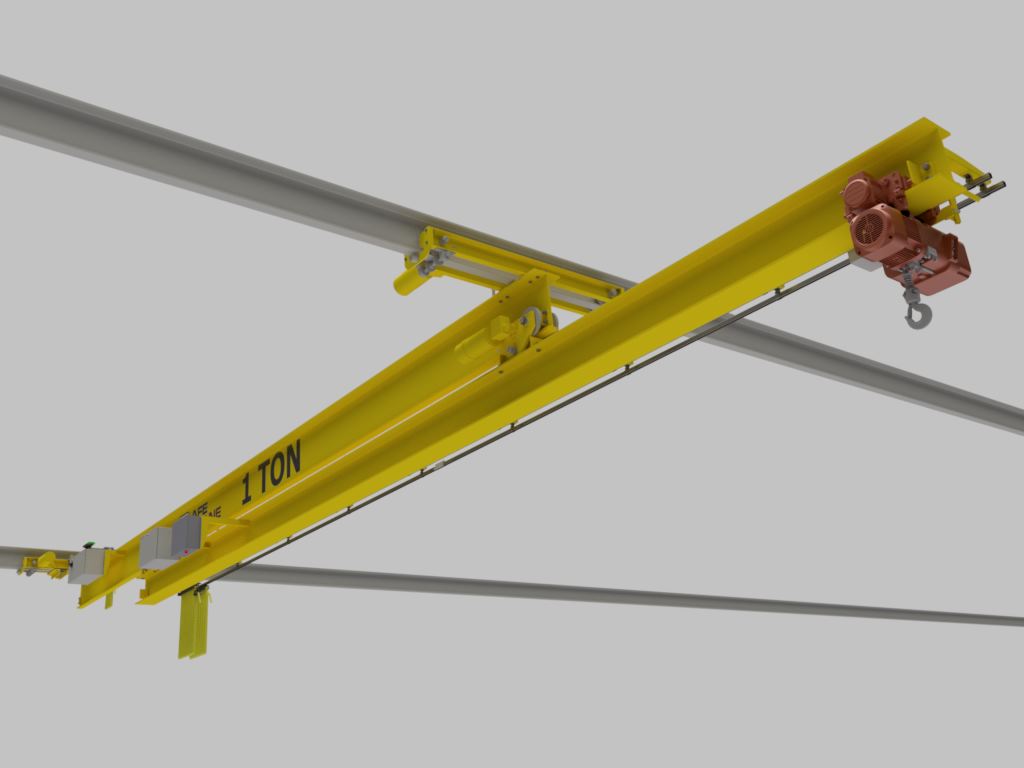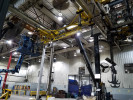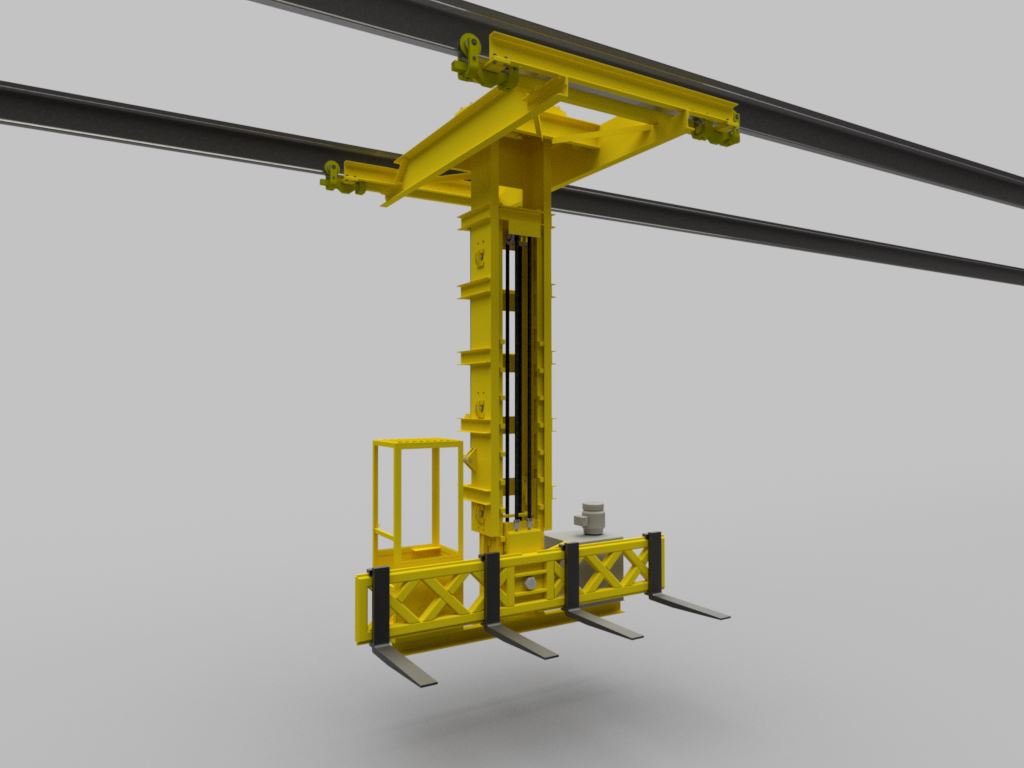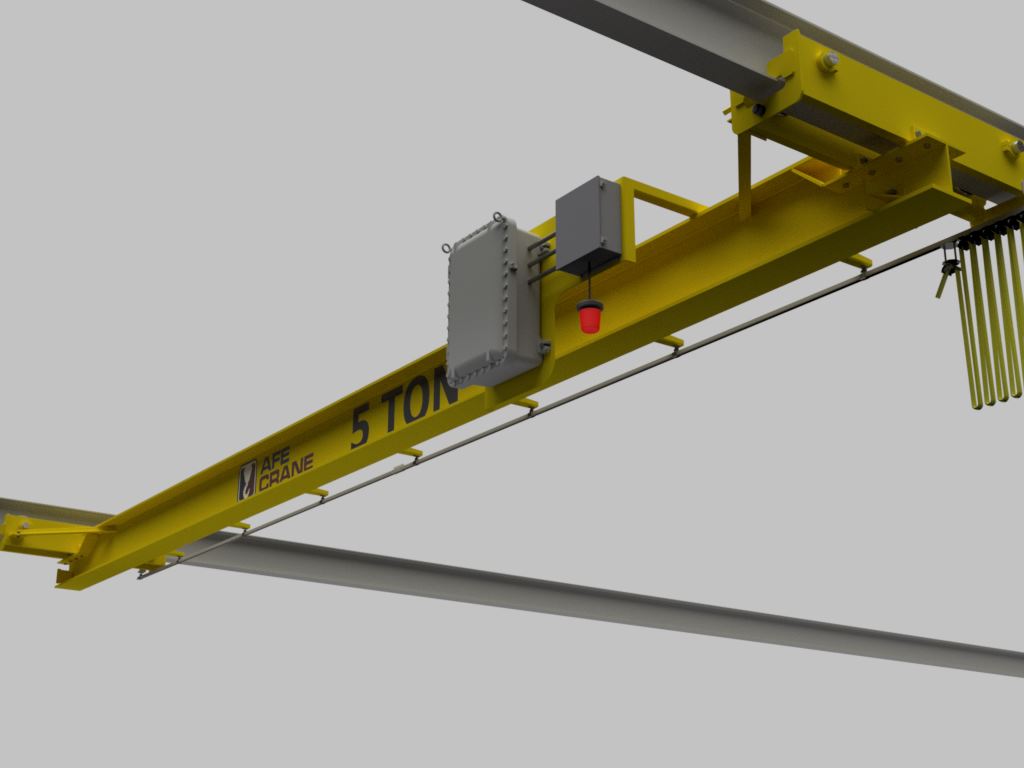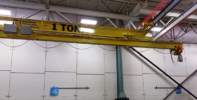
Telescoping bridge cranes (a.k.a. projecting bridge cranes) are under hung cranes (single or double girder) that have a secondary bridge that projects beyond the end of the bridge beam. A telescoping crane can extend beyond a support or building column to lift material in an adjacent bay, and then retract so that the crane can pass by the column. These cranes typically only project in one direction but can be designed to project in both directions to maximize the use of the crane. If there is adequate headroom, telescoping cranes are a low budget way to implement a custom bridge cranes to increase hook coverage.


